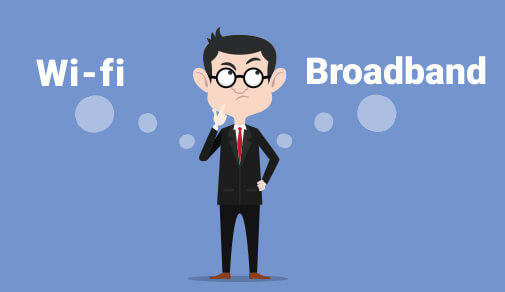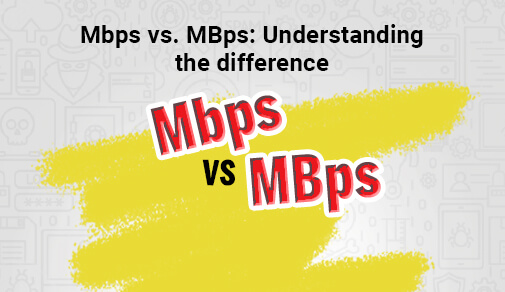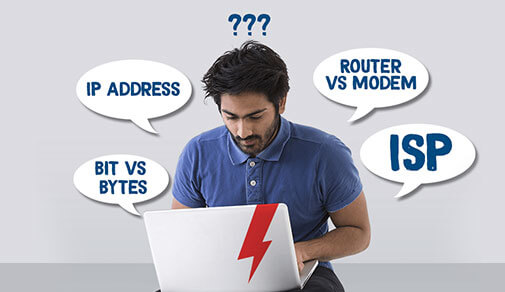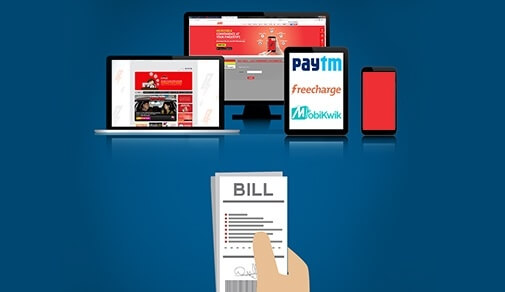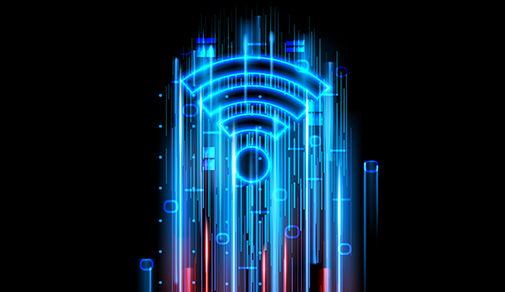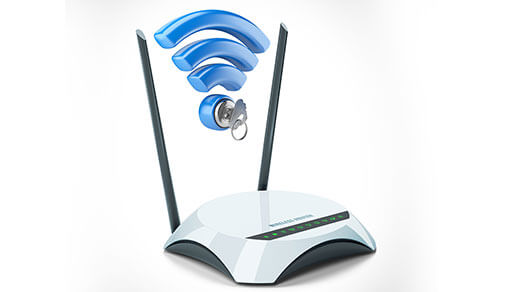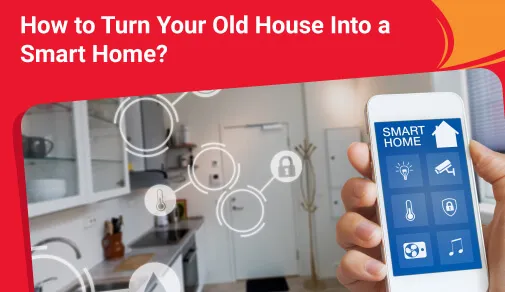
Smart homes are the newest trend among today's home buyers. These homes are powered by the internet of things (IoT) and are designed to give the homeowner more control over their home and ease of living.
Smart lighting systems, smart TVs, smart door locks, security cameras, and smart speakers such as Amazon Echo/Alexa are among the most popular smart home devices in India. The automation of these electrical and electronic appliances enables the homeowner to control them with their voice or a smartphone. Not only do such smart homes make life easier by automating tasks, but they also help with energy conservation and cost savings.
For the devices to communicate, a dependable broadband network is required. As a result, SMART HOME necessitates a SMART network that provides bandwidth and allows for device mobility. SMART networking is possible in SMART HOME via an optical fibre network connected to FTTH enabled devices.
The devices interact with other SMART devices/systems such as smartphones, tablets, mobile computers, environmental sensors, home monitoring systems, and entertainment equipment. A reliable high-speed internet connection is required for a smart home to function properly. An unlimited plan is ideal for powering smart devices in a technologically enhanced home. When selecting an internet plan, keep in mind that, in addition to smart devices in your home, you will require the internet for daily use purposes such as streaming, gaming, and office work.
How to convert a home into a smart home?
Simply put, a Smart Home uses technology and connectivity to monitor itself and provide continuous information on what is going on within it. This includes the following:
Home automation enables customers to control appliances remotely via their smartphone. Many appliances, including washing machines and coffee makers, can now be turned on from outside the house, as can lights. ABI Research predicts that smart home automation will be worth $34 billion by 2020.
Home security – monitoring your home and contents via CCTV, fire and smoke alarms, and door and motion sensors, so you can protect your home and contents (or check that the kids aren't having a party while you're away).
Smart thermostats allow you to raise the temperature when you leave the office so that the house is warm when you return. Homeowners can improve energy efficiency by monitoring temperatures in real time, such as seeing instant savings when an appliance or light is turned off. Smart homes can be made 40% more energy efficient by improving energy management.
eHealth – monitoring the well-being of those at home, particularly the elderly or infirm, provides significant healthcare benefits. They can live independently in their own homes while being monitored by video cameras linked to medical staff on call to deal with any emergencies that may arise.
Internet Connectivity for Smart Homes
Fiber to the home (FTTH), also known as fibre to the premises (FTTP), is the installation and use of optical fibre from a central location directly to individual buildings such as residences, apartment buildings, and businesses in order to provide high-speed internet access.
FTTH broadband uses optical fibre to connect directly to the user's home. Optical fibre transmits data from various servers to improve connectivity and user experience. FTTH is a broadband technology that is uniquely designed to achieve higher performance. Fiber optic cables run from a central office through an FDH or fibre disruption hub, then through a NAP or network access point, and finally into the user's residence via a terminal that serves as a junction box.
The following are the benefits of using FTTH services:
Broadband connectivity
reducing the amount of time spent searching and browsing the Internet
Increased security at home or in any other building by keeping it under video surveillance.
Represents a wide range of opportunities to learn or search the site from anywhere, using electronic learning, virtual class rooms, and virtual universities.
Ensure that access to work areas (meetings, workshops) is possible without being physically present, using videoconferences.
Provides interactive entertainment, such as video games, internet protocol television (IPTV), over-the-top (OTT), 4K, 8K M-Commerce, mobile applications, and online shopping.
Understanding Fibernet Connectivity for Smart Home Automation
Have we ever considered WHAT enables all of these machines to act SMART? Yes, we are talking about Wi-Fi connectivity, which was previously provided via copper cables but is now being replaced by a new technology known as fibre optic cable... It is more commonly referred to as FTTH.
With the increasing popularity of smart homes, the use of Wi-Fi technology to control home-based systems via smartphones will become an increasingly important part of our lives in the future. We, as end users, have daily access to Wi-Fi, but the technology that powers smart Wi-Fi must be in place.
How Much Internet Speed Does Your Smart Home Need?
Several smart home devices do not require a super-fast internet connection. Thermostats and lightbulbs only need to connect to the network in order to accept orders from your smartphone or control panel, so there isn't a lot of ongoing data flow.
However, there is one notable exception: cameras. Doorbell cameras and other smart cameras that transmit images or videos will use a significant amount of bandwidth. The well-known cam can transmit 1080p HD video at up to 4 Mbps. If you have several of them uploading at the same time, you may quickly exhaust a slow connection, leaving no bandwidth for other activities.
Different devices will operate at various speeds.
To determine the internet speed you will require, consider two factors: your overall internet speed requirements and the requirements of each smart device. Some common smart devices and their speed recommendations are as follows:
Smart cameras or video cameras. Any camera, including smart doorbells, security cameras, and other smart cameras, will need approximately 2 Mbps per camera.
Google Home and Amazon Echo: Any smart assistant you have will need at least 1 Mbps to function. When these devices are idle and not in use, they consume less than 1 Mbps.
Light switches or plugs that are smart. Each of your smart switches or plugs should consume less than 1 Mbps.
Choosing the Best Smart Home Bandwidth
There is no formula for calculating the amount of internet speed required by all smart homes. However, understanding the impact that your devices will have on your Internet speed can be beneficial. Most devices, including common smart thermostats and digital assistants, will have little impact on your bandwidth. However, if you require continuous data transfer – as in the case of cameras, which can use up to 4Mbps to upload standard 1080p HD video – you may require a higher bandwidth that can withstand continuous data use without interfering with other devices. Whether you intend to install cameras in your smart home or not, you should always keep in mind that you may be running more than one device at the same time.
As a thumb rule, to have a smart home, you can:
Add 5 Mbps if you are not installing smart cameras
Add 10 Mbps if you are running smart cameras
What Should You Do If You Have Slow Internet in Your Smart Home?
The first thing you should check is that you are not engaged in an active download or a video chat, as these may be using an internet plan. If you aren't using any bandwidth-intensive apps, try restarting your devices, modems, and router. Repeat the test to see if your speed has improved.
Modify Your Configurations to Save Bandwidth
If you lower the resolution of your cameras, you won't need to add as much extra speed. Higher resolution images necessitate more bandwidth when uploading or downloading. Reducing your camera's resolution will reduce image quality, but downgrading from 1080p to 720p, for example, may be worthwhile, especially if your internet plan has data limits.
Check that your router can handle your speed.
Some smart home tasks are local, which means they only use your home network and not the internet. All of these tasks, however, are still routed through your router, so in a smart home, your router must be capable of handling your internet connection and then some. Fortunately, most modern routers should be able to handle a smart home with ease. However, if your smart home is slow or glitchy and you're using a router from 2002, that router is most likely the source of the problem.
If your Internet connection continues to be poor, you should notify your Internet Service Provider (ISP). Your internet provider may need to change some settings on their end to ensure that your home receives the proper internet plan speed. Even after this, if the problem persists, you should consider switching your internet provider.
Be Part Of Our Network
All Categories
- BUSINESS INTERNET
- Router
- Internet Security
- Wi-Fi Connection
- Wi-Fi Network
- Internet Broadband
- smartfiber
- Internet Speed
- TV Streaming
- Wifi Connection
- BEST BROADBAND PLANS
- BROADBAND PLANS | 5GHz
- 2.4GHz
- 5GHz frequency
- 5GHz WiFi frequency
- 2.4GHz frequency
- LDRs
- LONG DISTANCE RELATIONSHIP
- ACT Fibernet
- wifi as a service
RECENT ARTICLES

Find the perfect internet plan for you!
